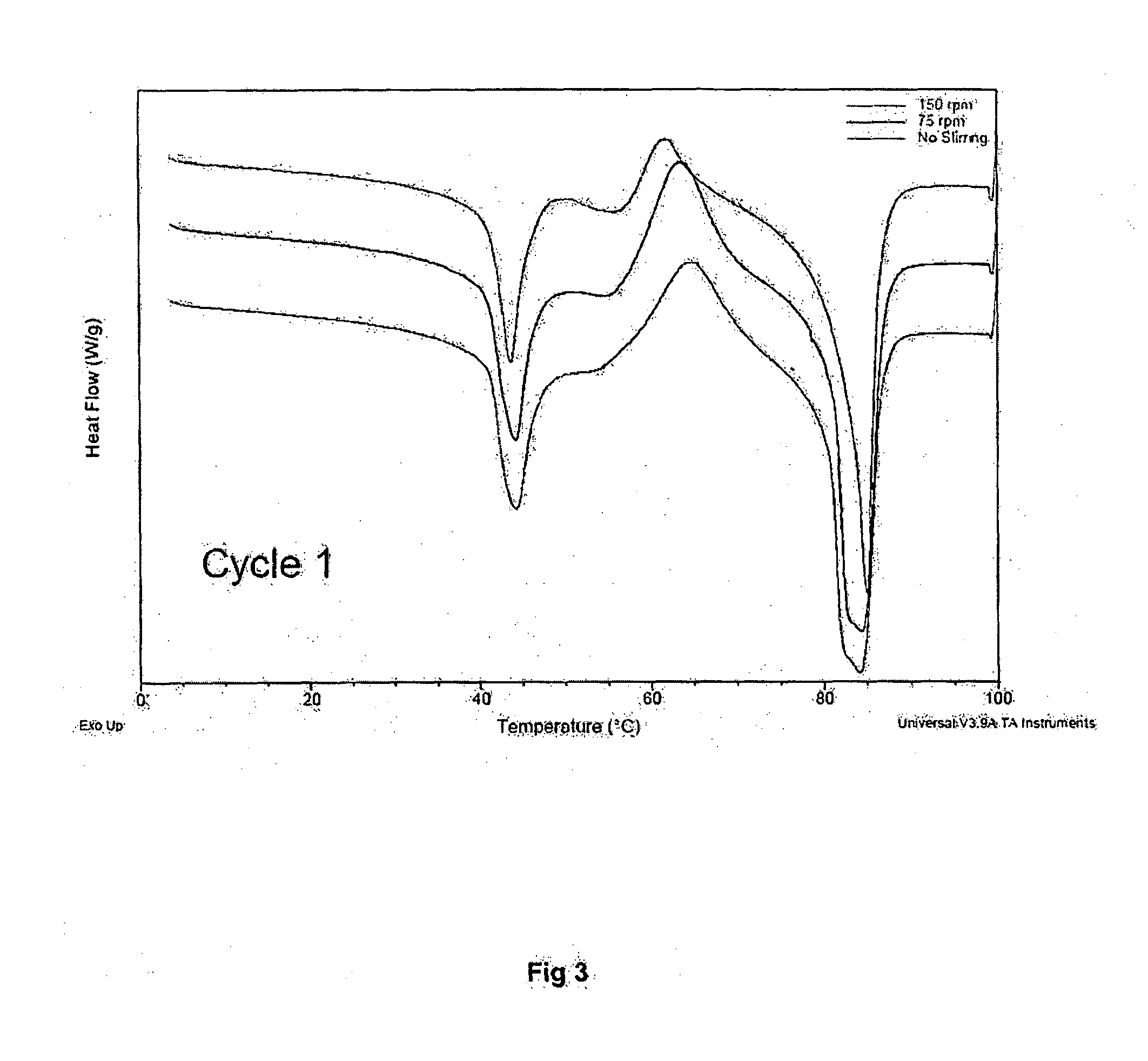Methods for producing liposomes
a technology of liposomes and liposomes, which is applied in the direction of antibody medical ingredients, carrier-bound antigen/hapten ingredients, peptide/protein ingredients, etc., can solve the problems of low entrapment load and efficiency, and large amounts of organic solvents for disposal
- Summary
- Abstract
- Description
- Claims
- Application Information
AI Technical Summary
Benefits of technology
Problems solved by technology
Method used
Image
Examples
example 1
Determination of the Melting Temperatures of DDA, TDB and the Lipid Powder Mixture Using Differential Scanning Calometry (DSC)
[0090]DSC thermographs of the starting material and resulting powder following the super critical CO2 fluid method are presented in FIG. 2 and FIG. 3. The thermographs were obtained using microcalorimeter from TA instruments. Data acquisition and analysis was performed using TA instruments universal software v.3.9A. In FIG. 2 the phase transition of DDA showed a narrow peak with a top point of 89° C. The phase transition of TDB showed two peaks with top points at 77 and 93° C. respectively.
[0091]The thermographs presented in FIG. 3 show that there is no effect of stirring during the super critical method (RESS). The powder prepared using the super critical fluid method shows an intrinsic similarity to the powder prepared by the lipid film method in which organic solvents / co-solvents are used. The conditions for the super critical fluid method for the obtained...
example 2
Producing DDA / TDB Lipid Powder without the Use of Ethanol Using the Supercritical Carbon Dioxide Process
[0092]DSC thermographs of DDA / TDB lipid powders (DDA:TDB ratio 5:1 w / w) are shown in FIG. 4. The lipid components are loaded onto a standard autoclave, sealed and heated to the operating conditions which for the super critical fluid method for the obtained graphs in FIG. 4 were 75° C. and 140 bar. No co-solvent was added. The liquefied suspension was stirred, where after the sample was cooled to room temperature before venting. The obtainable lipid powder cake could easily be grinded to fine powders.
example 3
Producing Stable CAF01 (DDA / TDB) Liposomes by High Shear Mixing
[0093]Liposome powder is weighed according to the desired final lipid content. The desired buffer is added e.g. 10 mM Tris pH 7.4 according to the weighed lipid content and desired final content. The buffer and lipid powder is heated to a temperature above the phase transition temperature Tm at the same time as high shear mixing at low speed is applied. Higher speed levels can be applied, however the risk of undesirable foaming increases with speed. When the temperature Tm is reached the high shear mixing at high rotational speed is started. The mixture is stirred at high rotational speed until a desired size distribution is reached. The liposome mixture is cooled to room temperature before refrigerated.
PUM
| Property | Measurement | Unit |
|---|---|---|
| boiling point | aaaaa | aaaaa |
| operating pressure | aaaaa | aaaaa |
| diameter | aaaaa | aaaaa |
Abstract
Description
Claims
Application Information
 Login to View More
Login to View More - R&D
- Intellectual Property
- Life Sciences
- Materials
- Tech Scout
- Unparalleled Data Quality
- Higher Quality Content
- 60% Fewer Hallucinations
Browse by: Latest US Patents, China's latest patents, Technical Efficacy Thesaurus, Application Domain, Technology Topic, Popular Technical Reports.
© 2025 PatSnap. All rights reserved.Legal|Privacy policy|Modern Slavery Act Transparency Statement|Sitemap|About US| Contact US: help@patsnap.com



